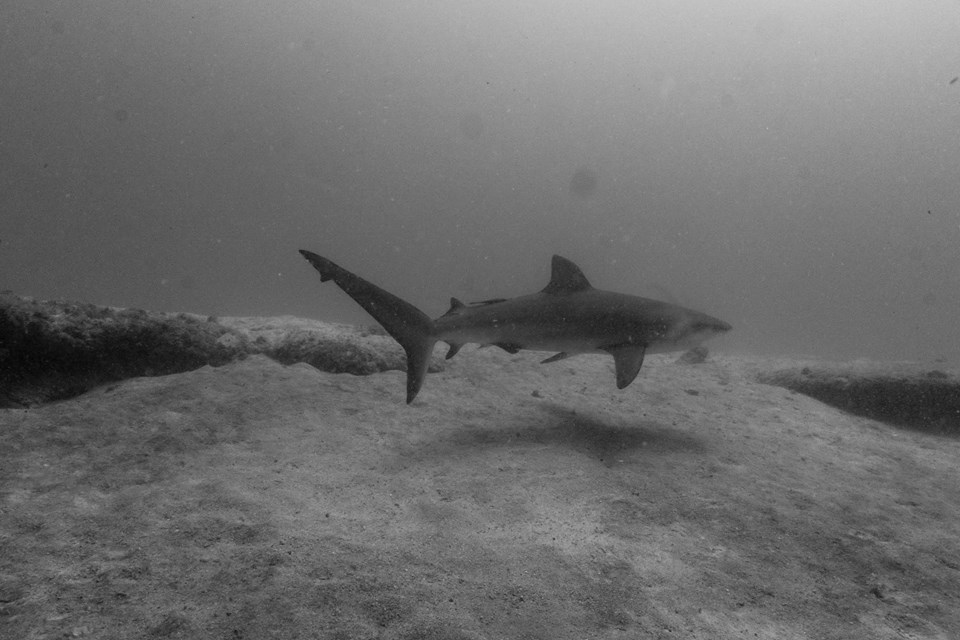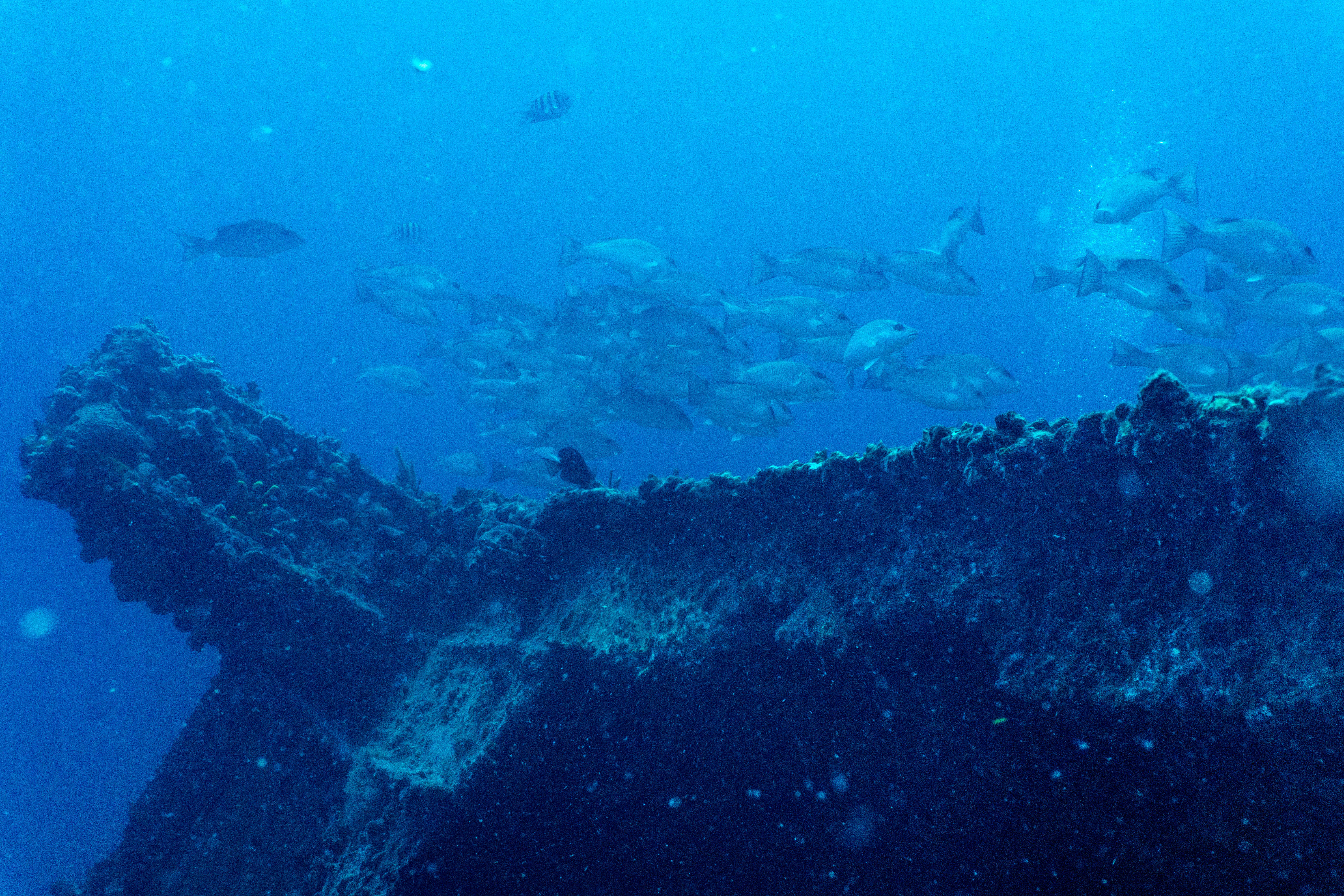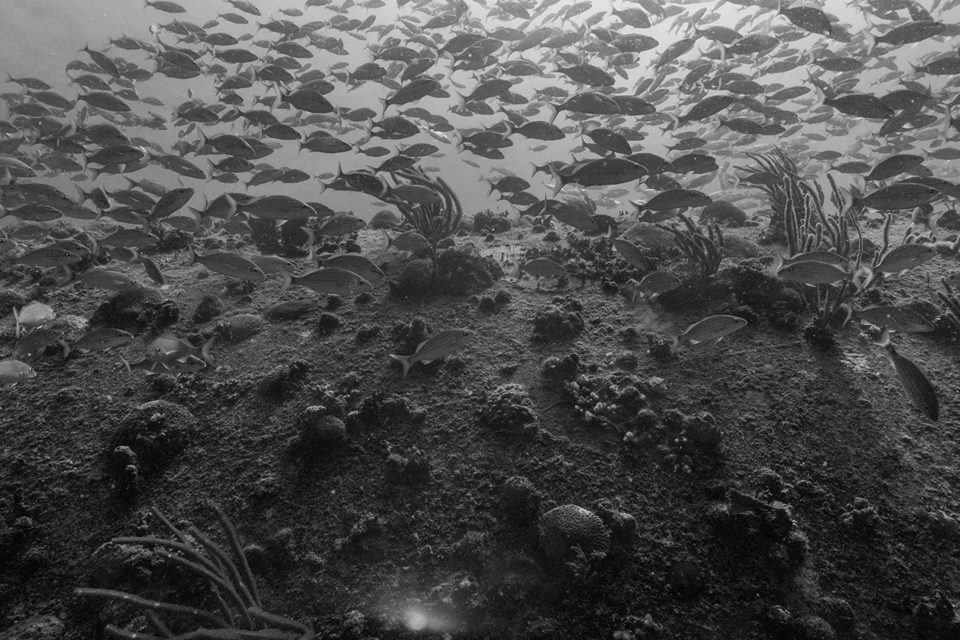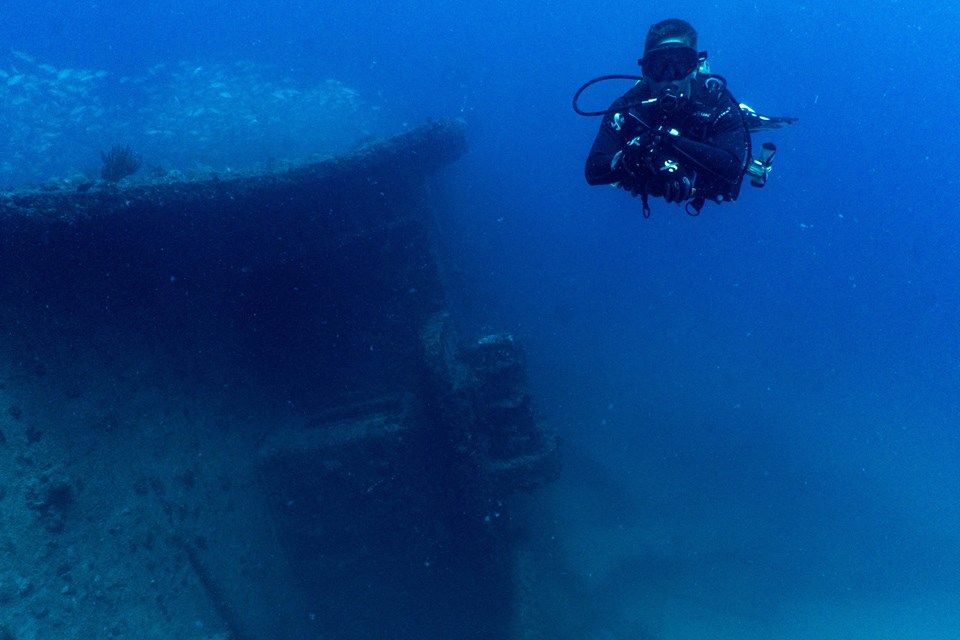About The Chikuzen
It’s a boat on the bottom of the ocean, but how did it get there? Well it was originally a refrigeration vessel that was somewhat abandoned in St. Marteen. As a hurricane was approaching it was deemed unsafe and to be moved, what better excuse then take it out to see and get rid of it. So set a fire and left, only to drift all the way over the British Virgin Islands. With fear it would damage islands and the habitat, it was a battle to redirect the ablaze boat to miss the British Virgin Islands. She finally sank between Tortola and Anegada. Even though she was burning all that time, there is still plenty to see on this intact wreck.
Diving Details – Advance Divers/Intermediate 50+ dives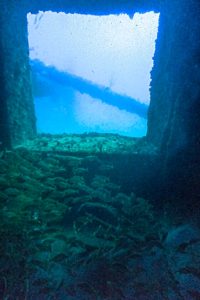
- This dive site is not recommended for newly certified divers, those that dive once a year, or with very few dives.
- 246 feet (75 meters) in length
- Laying on it’s port side in the sand
- Bottom depth of 80 feet
- Visibility can be anything from 40 feet (12 meters) to and outstanding 100+ feet (30 meters). Mostly depends on what time of the year, and mother nature.
- Water temperature doesn’t change much top to bottom, not much of a thermocline here.
- Warmest is in the summer months of 83-85’F (28-29’C) on the high end
- Coldest is usually December thru till March dipping to 80-82’F (26-27’C)
- Marine life a galore – you are in the open ocean! Generally you can see sharks, spotted eagle rays floating in the current, goliath groupers, tons of school fish all around the wreck. The keen eye or even the dive instructor can find the hidden gems of octopuses, sting rays, and any other thing lurking the deep dark waters.
Dive Gear Recommendations
You are in the open ocean and miles away from land and other boats. The upmost precaution and awareness should be taken above and below the water. Suggestion for gear below water includes:
- Full tank of 3,000 psi (210 bar) – Yeah sounds dumb, but people jump in with tanks below adequate air supply.
- Dive computer – know your depth and time and don’t exceed it unless trained. There is no recompression chamber in the British Virgin Islands.
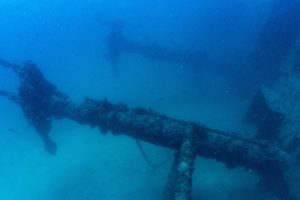
- Good strong fins to help surface swim and propel through the current, especially if it picks up.
- Secure all gear as best a possible to prevent unwanted snags : Octopus, SPG gauge, anything dangling flashlight, camera, etc
- A compass: taking bearings will help reduce the stress of getting lost and not finding the mooring line, also allows you to explore the whole wreck all while know where you are.
- The Emergency Octopus to share in the unlikely even your buddy needs air, or maybe yours doesn’t work as planned
- Surface Marker Buoy (SMB) and reel: know how to deploy it safely at depth, this will help incase you drift away and need to notify the captain of crew that you are else where in the ocean.
- Wetsuit: if you tend to get chilled on a dive, or cold easily rent a shorty or bring a long wetsuit. 3mm would be sufficient, 5mm if you really are hardcore or always cold. (We’ve all been there)
- Flashlight is nice to have to look under ledges or inside and around the wreck.
- 3 minute safety stop at 15 feet (3 meters) – mandatory on a deep dive such as this one. Also great to watch the marine life below, and float in the current while holding onto the mooring line.
Location | Above and Below
- 7 1/2 miles (12 km) north of Tortola on the way to Anegada is the hard to find mooring buoy of this beautiful wreck. We would suggest jumping on board with a local dive company like Sail Caribbean Divers to ensure you find the place, a successful dive, and take of you and all divers in a remote location.
- It’s most imperative that you descend down the mooring line to the bottom. The open ocean and change drastically, and more often then not the surface is rough, and a mild to strong current can be expected below the surface. Hold the line to the bottom to save energy and your air (it’s a deep dive for most people). Upon reaching the split on the mooring line, take the right to the sand bottom. As you descend down you should find her laying off to your right depending on visibility. Follow the line in the sand to the wreck. Take navigation bearings and landmarks (don’t use fish)
